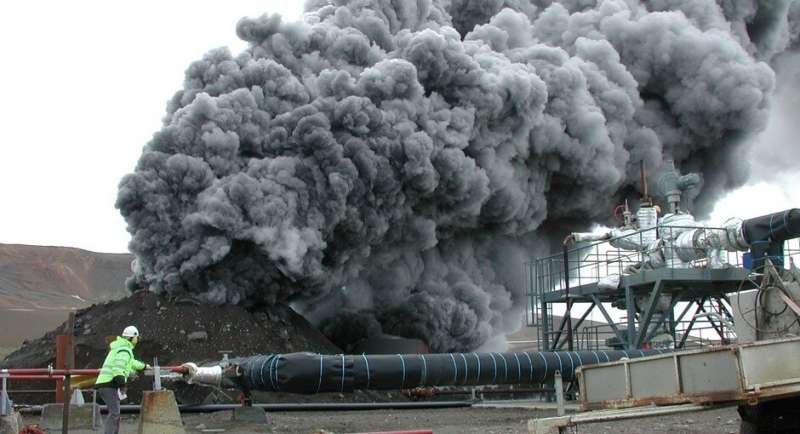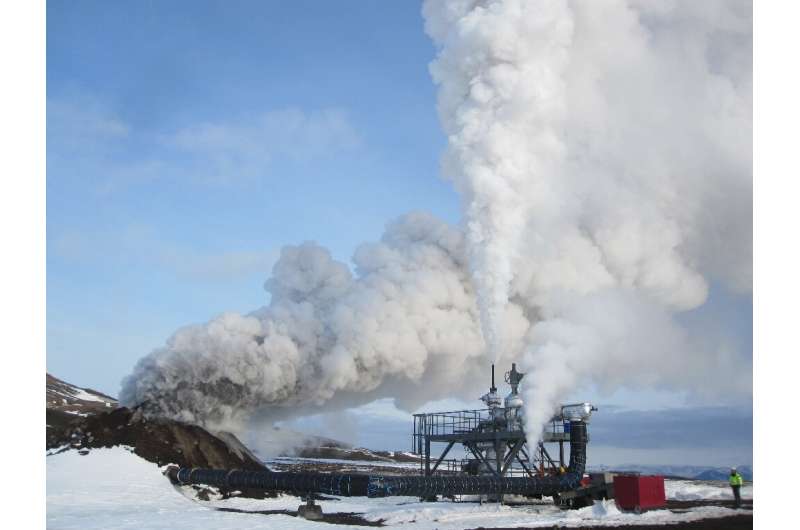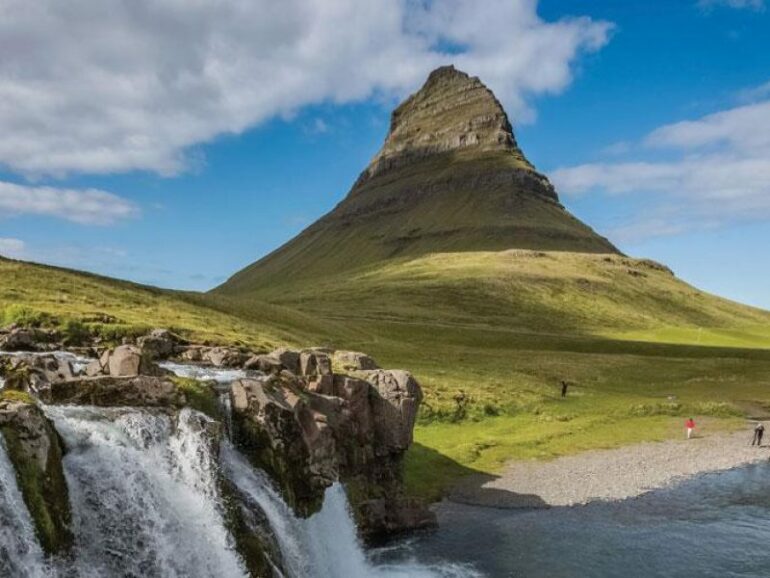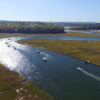With its large crater lake of turquoise water, plumes of smoke and sulphurous bubbling of mud and gases, the Krafla volcano is one of Iceland’s most awe-inspiring natural wonders.
Here, in the country’s northeast, a team of international researchers is preparing to drill two kilometres (1.2 miles) into the heart of the volcano, a Jules Verne-like project aimed at creating the world’s first underground magma observatory.
Launched in 2014 and with the first drilling due to start in 2024, the $100-million project involves scientists and engineers from 38 research institutes and companies in 11 countries, including the US, Britain and France.
The “Krafla Magma Testbed” (KMT) team hopes to drill into the volcano’s magma chamber. Unlike the lava spewed above ground, the molten rock beneath the surface remains a mystery.
The KMT is the first magma observatory in the world, Paolo Papale, volcanologist at the Italian national institute for geophysics and volcanology INGV, tells AFP.
“We have never observed underground magma, apart from fortuitous encounters while drilling” in volcanoes in Hawaii and Kenya, and at Krafla in 2009, he says.
Scientists hope the project will lead to advances in basic science and so-called “super hot rock” geothermal power.
They also hope to further knowledge about volcano prediction and risks.
“Knowing where the magma is located… is vital” in order to be prepared for an eruption. “Without that, we are nearly blind,” says Papale.

In 2009, a bore drill hit a pocket of 900 degree Celsius (1,650 Fahrenheit) magma by chance, at a depth of 2.1 kilometres.
Not so deep down
Like many scientific breakthroughs, the magma observatory is the result of an unexpected discovery.
In 2009, when engineers were expanding Krafla’s geothermal power plant, a bore drill hit a pocket of 900 degree Celsius (1,650 Fahrenheit) magma by chance, at a depth of 2.1 kilometres.
Smoke shot up from the borehole and lava flowed nine metres up the well, damaging the drilling material.
But there was no eruption and no one was hurt.
Volcanologists realised they were within reach of a magma pocket estimated to contain around 500 million cubic metres.
Scientists were astonished to find magma this shallow—they had expected to be able to drill to a depth of 4.5 kilometres before that would occur.
Studies have subsequently shown the magma had similar properties to that from a 1724 eruption, meaning that it was at least 300 years old.
“This discovery has the potential to be a huge breakthrough in our capability to understand many different things,” ranging from the origin of the continents to volcano dynamics and geothermal systems, Papale enthuses.

Scientists hope the magma observatory project will lead to advances in basic science and “super hot rock” geothermal power, as well as furthering knowledge about volcano prediction and risks.
Technically challenging
The chance find was also auspicious for Landsvirkjun, the national electricity agency that runs the site.
That close to liquid magma, the rock reaches temperatures so extreme that the fluids are “supercritical”, a state in-between liquid and gas.
The energy produced there is five to 10 times more powerful than in a conventional borehole.
During the incident, the steam that rose to the surface was 450C, the highest volcano steam temperature ever recorded.
Two supercritical wells would be enough to generate the plant’s 60 megawatt capacity currently served by 18 boreholes.
Landsvirkjun hopes the KMT project will lead to “new technology to be able to drill deeper and to be able to harness this energy that we have not been able to do before,” the head of geothermal operations and resource management, Vordis Eiriksdottir, said.
But drilling in such an extreme environment is technically challenging. The materials need to be able to resist corrosion caused by the super hot steam.
And the possibility that the operation may trigger a volcanic eruption is something “one would naturally worry about”, says John Eichelberger, a University of Alaska Fairbanks geophysicist and one of the founders of the KMT project.
But, he says, “this is poking an elephant with a needle.”
“In total, a dozen holes have hit magma at three different places (in the world) and nothing bad happened.”
2021 AFP
Citation:
Iceland’s journey to the centre of the Earth (2021, November 26)



